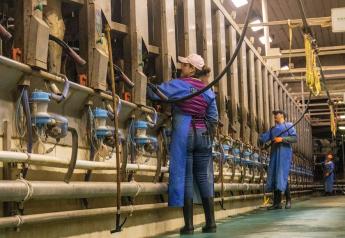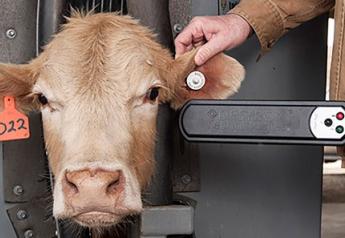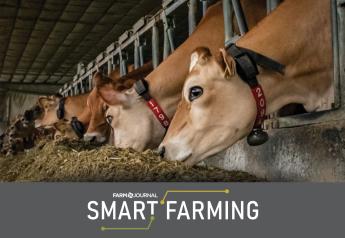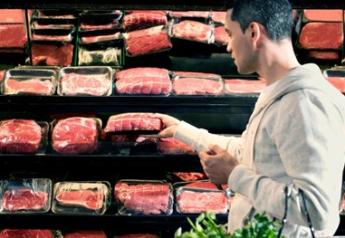Beef-on-Dairy: Why Feedlots Crave This Important Information
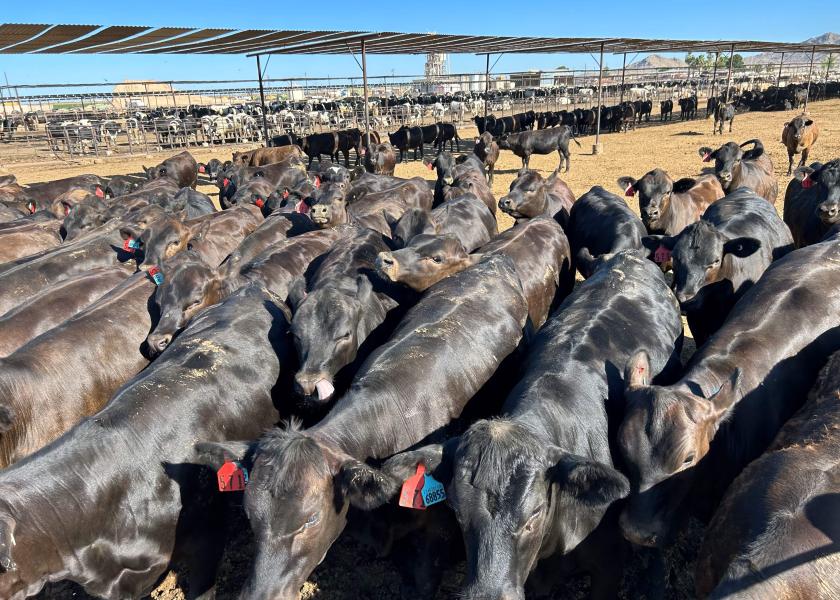
Within the last five years, the number of purebred dairy animals that have passed through feedlots has shrunk drastically. What used to be a purebred Holstein steer has now become a beef-on-dairy cross, and it’s estimated almost 23% of the total number of fed steers and heifers within the U.S. are actually coming from dairies.
According to Dr. Aimee Halfa, a beef innovation lead at Cargill, there are several reasons why these beef-on-dairy animals have seen explosive growth. One of the biggest spurs from the severe drought that has blanketed most of the Midwest, which in turn has forced herd reductions amongst the beef industry.
With the conventional beef herd currently in a liquidation phase, feeder calf prices have skyrocketed, triggering a supply and demand issue between the beef industry and feedlots. Dairy producers, however, have helped fill the pipeline by producing beef-on-dairy calves, and have turned a hefty profit in doing so.
Feedlots and Consumers Crave Knowledge
Not only have beef-on-dairy animals proven their worth within the beef supply chain system, they’ve also won over consumers with their overall consistency.
“The beef industry has always been segmented and variable,” Halfa told the audience during the Dairy Strong conference held in Green Bay, Wis. “We have cattle that originate from variable genetics, different production systems and different environments. All of this is feeding into a system where our customers and consumers want to be able to purchase a steak, hamburger or whatever kind of beef product they want and have the same eating experience every single time. Additionally, they want to know exactly how that animal was raised. This is where dairy can contribute nicely to our system.”
According to Halfa, beef-on-dairy cross animals work well in the beef industry because they are so uniform. And because of this, dairy farmers have the opportunity to contribute quality beef to the pipeline while also turning a sizeable profit. To do so, however, requires producers and feedlots to breed and feed these animals efficiently. And as beef-on-dairy animals within the feedlot system continue to rise, feedlots are craving two key pieces of information to help ensure these crossbred cattle thrive.
-
Health Records
No matter what age beef-on-dairy animals are sold, buyers want to see that the animals they are purchasing were well cared for. In particular, feedlots are looking for beef-on-dairy animals who were given colostrum, vaccinated and who have been exposed to a minimum amount of stress.
“One thing we’ve known for a while in the beef cattle industry is that disease, specifically respiratory disease, has a big impact on animal performance and carcass quality,” Halfa says. “Knowing when and what vaccinations or antibiotics were used along with having information on any health events is really valuable data to pass along.”
By knowing the animal’s health status before it enters, feedlots can make more informed treatment decisions and better understand a specific animal’s performance metrics.
-
Nutrition Records
When a beef-on-dairy calf makes its way to the feedlot, the transition can be a stressful one. Just the dietary changes alone can be a challenge, Halfa notes.
“One area I see some operations struggle with is the transition from a calf grain to a feedlot TMR,” she says. “This is a really challenging point in these animals lives and when it’s not done correctly, you can really miss out on some good performance during a time when you should be capturing great feed efficiency and gain.”
To help make the transition a bit smoother, Halfa recommends dairy producers provide feedlots with the nutritional information of beef-on-dairy calves sold after weaning.
“Providing feedlots with previous diet information along with when the animal was weaned are two excellent pieces of data to pass along,” Halfa says. “Bonus points should be given to producers who track an animal’s average daily gain. Communicating that captured level of information can be really helpful for the next person feeding those animals.”
Additional Areas to Focus On
Besides providing health and nutritional information, Halfa says there are several other ways dairy producers can work to keep the buyers of their beef-on-dairy animals happy.
Communication - Regardless of who you are selling your animals to, communication and a well-established relationship will always be essential.
“Ask questions, get feedback and make improvements,” Halfa says. “People who are feeding or buying your cattle love to get information on the animals they are purchasing, and its valuable information dairy producers can provide. Prioritizing communication is an excellent way to help secure future business relations.”
Traceability – Knowing exactly how and where an animal was raised can be a big-ticket advantage for feedlots looking to buy animals who are predictable and consistent. According to Halfa, this is an area where dairy producers excel.
“When it comes to traceability, the beef industry has a lot of hurdles. The dairy industry, however, has a great opportunity to provide a traceable beef product much easier and quicker,” she says.
Dairy farmers are no strangers to providing quick and accurate information. In turn, not only does this help supply buyers with valuable information, but it also opens doors of opportunity to increase market access and build up your farm’s reputation of producing high-quality animals.
Metrics = Money
Whether you are selling your beef-on-dairy animals to a private buyer or a commercial feedlot, knowing the specific data points these buyers are looking for can help bring additional value to the animals you bring to market. Failing to pass this information along could be cause you to leave extra dollars on the table.
“Beef-on-dairy animals have the potential to add quality cattle to our fed beef supply,” Halfa says. “If you are going to look at breeding dairy animals to beef, it’s important to understand the metrics behind how these animals should be handled and fed within feedlots in order to sell them for a healthy alternative income stream.”


